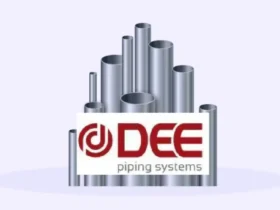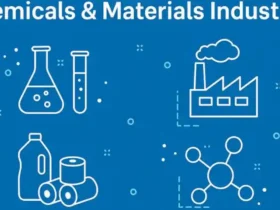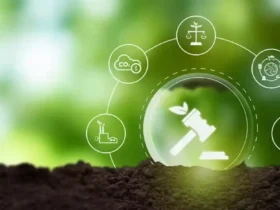
Chemical reactors are the heart of any chemical processing operation. They are where raw materials are transformed into valuable products through chemical reactions. From manufacturing pharmaceuticals to producing fuels and polymers, reactors play a central role. Understanding the different types of reactors and their applications is essential for engineers, plant operators, and anyone entering the field of chemical processing.
In this article, we’ll explore the major types of chemical reactors, their working principles, advantages, and typical applications.
1. What is a Chemical Reactor?
A chemical reactor is a vessel designed to contain and control chemical reactions. Reactors provide the environment for reactants to mix, interact, and convert into desired products under controlled conditions of temperature, pressure, and concentration.
Reactors come in various shapes and sizes, and their design depends on the nature of the chemical reaction, the desired output, and operational constraints such as cost, space, and safety.
2. Types of Chemical Reactors
a) Batch Reactor
- Description: A batch reactor is a closed system where all reactants are loaded at the beginning, and the reaction occurs over time without any inflow or outflow.
- Operation: Once the reaction is complete, products are removed, and the reactor is cleaned for the next batch.
- Advantages:
- Flexibility in operation.
- Suitable for small-scale production and R&D.
- Easy to handle multiple product recipes.
- Applications: Pharmaceutical manufacturing, specialty chemicals, and pilot-scale production.
b) Continuous Stirred-Tank Reactor (CSTR)
- Description: A CSTR is a continuous process reactor where reactants are fed continuously, and products are removed simultaneously. It features continuous stirring to maintain uniform composition.
- Operation: Maintains steady-state operation with constant input and output.
- Advantages:
- Good for reactions requiring precise control.
- High production rates for large-scale applications.
- Applications: Wastewater treatment, fermentation, and polymer synthesis.
c) Plug Flow Reactor (PFR)
- Description: Also known as a tubular reactor, the PFR is a cylindrical tube where reactants flow through the reactor in one direction without back-mixing.
- Operation: As reactants flow, they undergo conversion along the length of the reactor.
- Advantages:
- High conversion efficiency.
- Suitable for large-scale continuous processes.
- Applications: Petrochemical processing, gas-phase reactions, and catalytic cracking.
d) Packed Bed Reactor
- Description: This reactor consists of a tube or vessel filled with solid catalyst particles. The reactants flow over the catalyst to facilitate the reaction.
- Operation: Commonly used for catalytic reactions.
- Advantages:
- High surface area for catalyst contact.
- Efficient for gas-liquid or gas-solid reactions.
- Applications: Hydrogenation, ammonia synthesis, and reforming processes.
e) Fluidized Bed Reactor
- Description: In this reactor, solid catalyst particles are suspended in an upward-flowing fluid, giving the mixture fluid-like properties.
- Operation: Provides excellent heat and mass transfer.
- Advantages:
- Uniform temperature distribution.
- Prevents catalyst deactivation due to hot spots.
- Applications: Fluid catalytic cracking (FCC), combustion, and polymerization.
f) Semi-Batch Reactor
- Description: Combines features of batch and continuous reactors. Reactants are added during the reaction, and products may be removed simultaneously.
- Operation: Useful when controlling reaction rate is critical.
- Advantages:
- Flexibility in reaction control.
- Suitable for reactions with gaseous components.
- Applications: Gas-liquid reactions, neutralization, and polymerization.
3. Factors Influencing Reactor Selection
Choosing the right reactor involves understanding several factors:
- Reaction Kinetics: Speed and order of the chemical reaction.
- Thermodynamics: Heat effects and energy requirements.
- Mixing and Mass Transfer: Efficiency of mixing and reactant interaction.
- Scalability: Ability to scale up from lab to industrial production.
- Safety and Control: Operational safety and process control needs.
Engineers often use simulation tools and pilot testing to determine the best reactor type for a specific process.
4. Emerging Trends in Reactor Design
Modern reactor design is being shaped by advancements in materials, process intensification, and automation:
- Microreactors: Miniaturized reactors used for fast and safe testing of reactions.
- Modular Reactors: Scalable, skid-mounted units for flexible and distributed production.
- Automated Control Systems: Use of sensors and AI for real-time monitoring and optimization.
- Sustainable Design: Reactors designed to minimize energy use and waste production.
These innovations help increase efficiency, safety, and environmental sustainability.
5. Conclusion
Chemical reactors are vital components in the chemical industry. Understanding the different types—batch, CSTR, PFR, packed bed, fluidized bed, and semi-batch—and their applications helps professionals choose the right reactor for their process.
With ongoing technological advancements, reactor design is evolving to meet the demands of modern chemical production. Whether you are a student, a researcher, or an industry professional, having a solid grasp of reactor fundamentals will empower you to contribute effectively to chemical engineering and process development.
As industries strive for greater efficiency and sustainability, innovative reactor technologies will continue to play a crucial role in shaping the future of chemical processing.








Leave a Reply